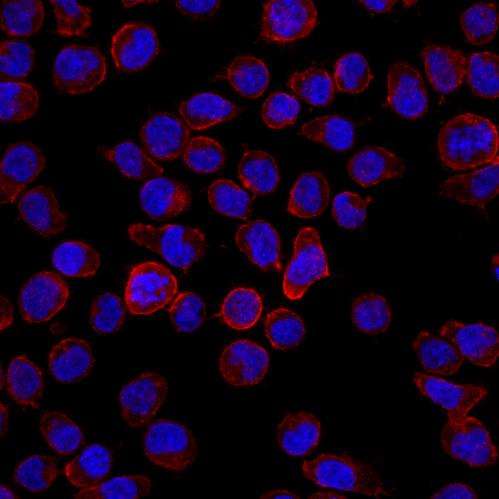Driving tumour cells to their death

B cell acute lymphoblastic leukaemia, or B-ALL, is the most common tumour disease in children and also occurs in adults. It develops when signalling pathways in immature B cells, or pre-B cells, are dysregulated. Prof. Dr. Markus Müschen from the University of California in San Francisco, USA, and his team worked together with the BIOSS researchers Prof. Dr. Hassan Jumaa and Prof. Dr. Michael Reth to find a new approach for treating the B-ALL tumour disease. Their studies could change the way we think about clinical therapies for treating these tumour diseases. The scientists have published their research in the journal Nature.
B cells are white blood cells that produce antibodies against antigens, namely substances which the immune system recognises as foreign. Normal B cell development and maturation is regulated by a balance between kinase and phosphatase enzymes. These enzymes phosphorylate or de-phosphorylate the signalling subunits of the B cell antigen receptors (BCR). This means that the kinases add phosphate groups to the BCR, while the phosphatases remove them. Only if it has been phosphorylated by kinases is a BCR completely active and signals to the B cell that there is a foreign substance. This means that the kinases and phosphatases affect the receptor's capacity to send signals.
In B-ALL tumour cells, certain kinase enzymes, such as the Abelson tyrosine kinase (ABL), are altered and act as oncogenes, spurring the growth of tumours independently of the BCR. The B cells then continue to divide although they do not function. That is why this disease is treated with agents that inhibit the ABL kinase. However, resistant ABL mutants still often develop and the tumour continues to grow.
The American and German team investigated how BCR signalling in tumour cells is regulated. They discovered that the signalling subunits of the BCR in B-ALL tumour cells are hardly phosphorylated and that there is a higher number of inhibiting receptors on the cell's surface. Because these receptors bind phosphatases, they prevent the BCR from becoming active. When the researchers shut off the inhibiting receptors or the associated phosphatases, the B-ALL tumour cells died instantly. The researchers were also able to demonstrate in an animal experiment how a phosphatase inhibitor prevented tumours from spreading. By inhibiting the phosphatases, they essentially freed the BCR signalling pathways that the ABL kinase had been supressing. Because a B cell that has a disproportionate amount of active BCR receptors no longer has a balance of kinases and phosphatases, this form of therapy thus leads to cell death, or what is known as apoptosis.
Future ALL treatments could aim at inhibiting the phosphatases instead of the ABL kinases and thereby strengthen BCR signals. Reth said, "In the last few years, we have investigated at BIOSS the significance of the balance between kinases and phosphatases for the normal development of B lymph nodes. Now we've discovered that this also plays a role in the development and treatment of B cell tumours."
Reth is the scientific director of the cluster of excellence BIOSS Centre for Biological Signalling Studies. He is also a professor at the Institute of Biology III at the University of Freiburg and head of a research group at the Max Planck Institute of Immunobiology and Epigenetics in Freiburg. Jumaa is now a professor at the Institute of Immunobiology at the University of Ulm and was a member of the BIOSS Centre for Biological Signalling Studies.
More information: "Signaling thresholds and negative B cell selection in acute lymphoblastic leukemia." Nature. DOI: 10.1038/nature14231

















